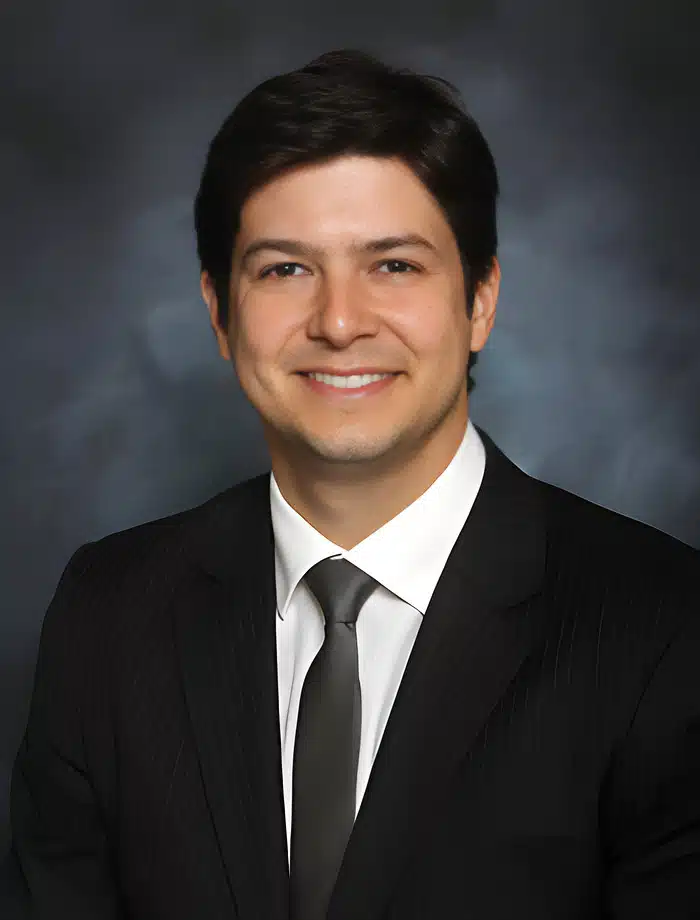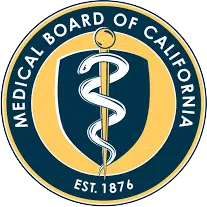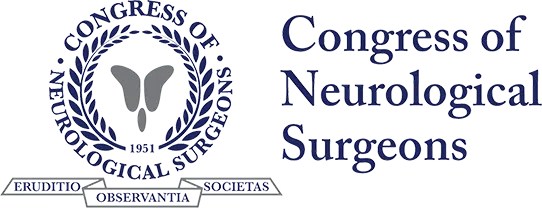Benefits of Revision Spine Surgery
Revision spinal surgery in Orange County offers patients restoration of spinal movement and improved comfort with minimally invasive spinal surgery options. Revision spinal surgery also has more benefits:
"*" indicates required fields
Revision spinal surgery in Mission Viejo, CA, offers relief for individuals suffering from new as well as recurring spine conditions after a prior operation. While all spine surgery is complex, revision surgery is usually even more invasive and complicated than the initial procedure. Board-certified neurosurgeon Alexander Taghva, M.D., F.A.A.N.S., specializes in intricate revision surgery and provides significant improvements to patients’ quality of life while using minimally invasive techniques.
What is Revision Spine Surgery?
Dr. Taghva performs revision spine surgery in Mission Viejo, CA, to treat symptoms like numbness, pain, and reduced mobility after one or more previous spinal surgeries. He may recommend secondary surgery with minimally invasive technology for issues mainly for:
- Spinal Fusion Failure (pseudarthrosis) – Fusion creates a permanent union between two or more vertebrae in the cervical, thoracic, or lumbar spine using a bone graft or hardware. The bone graft or device must bond with the spine to form a solid unit and eliminate movement between the vertebrae. Spinal fusion failure can occur within the first month after the original spinal surgery or years later. Diabetes, smoking, as well as taking corticosteroids can increase the risk of pseudarthrosis. A failure to bond, the type of hardware, or a lack of screws or plates can also play a role in spinal fusion failure.
- Improper Placement of Spinal Implants
- Hardware Malfunction
- Adjacent Disc Degeneration
Other issues Revision Spine Surgery Can Treat
Lumbar Spinal Stenosis
Spinal stenosis occurs most often in the lower back. Some patients require repeat surgery due to surgical complications, failure to achieve solid lumbar fusions, or persistent symptoms. Repeat surgery is often associated with age and additional health issues.
Incorrect Diagnosis
Referred pain causes chronic discomfort in a different spot from the actual abnormality and can lead to an incorrect initial diagnosis. It is essential to choose a skilled and attentive surgeon like Dr. Taghva, who has many years of experience and thoroughly evaluates each patient before performing revision spinal surgery.
Surgical Error
Surgical error is rare, but does occur occasionally. Dr. Taghva is available to patients who are looking for a second opinion and will evaluate the spine to determine if an error like inadequate decompression, screw malposition, epidural hematoma, or another medical issue occurred during the first surgery.
Spinal Instability from Infection, Trauma, or Degenerative Facet Disease
Degeneration of the facet joints can cause segmental instability that may require spinal fusion in the affected area years after the initial spinal surgery.
Herniated Disc Following Discectomy
Intervertebral disc herniation refers to a bulging, slipped or ruptured disc that can occur in the cervical, thoracic, and lumbar spine. A partial or full discectomy is performed to decompress nerve pressure. There is a 0.5-25% risk of another disc herniation after a successful first discectomy.
Call today to schedule your consultation
Am I a Candidate for Revision Spinal Surgery?
Dr. Alexander Taghva determines each patient’s candidacy for revision spine surgery in Mission Viejo, CA, during a private consultation. When conservative treatments with medication or physical therapy do not significantly reduce or resolve the pain, revision surgery may be the answer.
Dr. Taghva considers the patient’s age, overall health, possible surgical risks, and other factors before recommending revision surgery. Patients who are suffering from one or more of the following symptoms after a back operation may benefit from revision surgery with Dr. Taghva:
- Back pain that impairs quality of life or limits regular activity
- Progressive neurological problems like leg weakness or numbness
- Loss of healthy bladder or bowel functions
- Difficulty walking or standing

How do I prepare for spinal revision surgery?
Dr. Taghva will provide you with a list of pre-surgical instructions. A healthy diet and exercise as mobility allows will help encourage a speedy recovery. Stop taking herbal supplements and Advil, Motrin, and aspirin two weeks before the surgery to reduce the risk of bleeding.
Testimonials
Revision Spine Surgery Consultation in Orange County
Patients must consult with Dr. Taghva to receive a customized treatment plan that may or may not involve revision surgery. Dr. Taghva examines each potential candidate during a private revision spinal surgery consultation in Mission Viejo.
The doctor may order X-rays, CT scans, or MRI imaging to determine if a failed fusion, bulging disk, faulty device, degeneration of the facet or intervertebral joints, scar tissue, or another spinal abnormality is causing the patient’s issues. He also reviews the patient’s health history to investigate other possible causes for chronic pain and numbness, such as diabetes, an autoimmune disorder, peripheral artery disease, or another medical issue.
Dr. Taghva utilizes an interdisciplinary approach to treating back pain that includes prevention and rehabilitation, physical therapy, pain management, and finally, minimally invasive spinal surgery only when necessary. If he determines that revision surgery is the best option for a patient, he will explain the surgery, the recovery, and the expected results in detail.
Up to 95% of patients experience no pain after revision surgery. Dr. Taghva uses minimally invasive technology, allowing his patients to walk on the same or the following day after the surgery and enjoy a full recovery of improved mobility without pain.
The Revision Spinal Procedure
Dr. Alexander Taghva customizes revision spinal surgery in Orange County to address each patient’s unique spinal pathology. As a specialist in minimally invasive surgical techniques, Dr. Taghva performs revision surgery using tiny incisions whenever possible for reduced trauma to the surrounding tissues and muscles. This allows for a quicker recovery and less pain following surgery.
Each patient receives the details of their surgery in advance, often during the initial consultation. Dr. Taghva completes revision surgery with general anesthesia for safety reasons but most of his patients return home the same day. One or more of the following surgical procedures may be included in revision surgery to help patients achieve significant relief:
Revision Lumbar Surgery
During revision lumbar surgery, Dr. Taghva creates a short, vertical incision along the spine in the lower back. He then gently moves the muscles away from the lower spine using minimally invasive technology to separate the fibers without cutting them. The area is held open with a retractor while the doctor inserts a light and a microscope. Dr. Taghva then removes all bony protrusions and the section of lamina covering the back of the spine to decompress the nerves.
Discectomy and Fusion
Discectomy may be performed to remove a crushed, herniated or damaged disc in the cervical (upper), thoracic (middle), as well as the lumbar (lower) sections of the spine. Once the damaged disc is removed, the doctor may place an artificial disc in the space between the vertebrae or perform spinal fusion surgery.
Spinal Fusion
After removing a herniated disc, Dr. Taghva may perform spinal fusion instead of artificial disc replacement. During fusion, he secures the adjacent vertebrae with metal plates or rods and places two bone grafts between the vertebrae in place of the disc. Spinal fusion is also performed during revision surgery to address osteoporosis or poor bone quality, expand or repair a prior fusion, stabilize the spine after removing a herniated disc, or address degeneration of the facet or intervertebral joints.
Cervical Revision Spine Surgery
Dr. Taghva will perform a cervical spine neck operation from the front (anterior) or the back (posterior) depending on the disc location. He may remove a section of the lamina and the disc herniation from a posterior approach. The posterior approach generally does not require surgical fusion. The doctor must stabilize the spine after the anterior removal of a disc. Spinal fusion is typically performed with a cervical plate, device, and screws, but an artificial cervical disc may be an option instead of spinal fusion.
Are you ready to meet a leading Orange County Neurosurgeon?
Recovering from Revision Spine Surgery
Patients will receive post-surgical spinal revision instructions during their consultation. Many spinal revision patients in Orange County and Long Beach, California, can stand and move around as soon as the evening of the surgery or the next day. Dr. Taghva provides his patients with self-directed rehabilitation instructions which include gentle stretching, walking, as well as movement to promote healing and mobility. Professional physical therapy generally begins most of the time after the first follow-up appointment.
Significant relief from pain and discomfort is typically experienced shortly after the surgery, but the recovery is usually longer than after a first-time surgery. The recovery expectations vary based on the symptoms, inflammation, and nerve compression. Dr. Taghva’s patients often experience continuous improvements over the weeks and months following revision surgery.

Why Choose Dr. Alexander Taghva
Dr. Alexander Taghva is a leading board-certified neurosurgeon, specializing in brain surgery, endoscopic spine surgery, as well as spine disorders. Also, he is the only spine surgeon in Orange County and southern California who offers endoscopic laminotomy surgery. Dr. Taghva:
- Graduated from John Hopkins University School of Medicine and completed his residency at the University of California
- Completed a prestigious fellowship at The Ohio State University in Neuromodulation and Functional Neurosurgery
- Specializes in minimally invasive and endoscopic surgery, spinal stenosis, artificial disc replacement, spinal disorders, spinal surgery revision, and other spinal conditions.
- Specializes in brain surgery to treat trigeminal neuralgia, brain tumors, pituitary tumors, and Parkinson’s disease.
- A highly-respected neurosurgeon with many years of experience, including treating chronic pain via stimulation of the spinal cord and brain
- Actively involved in medical research and the lead investigator for clinical trials on spinal cord stimulation





